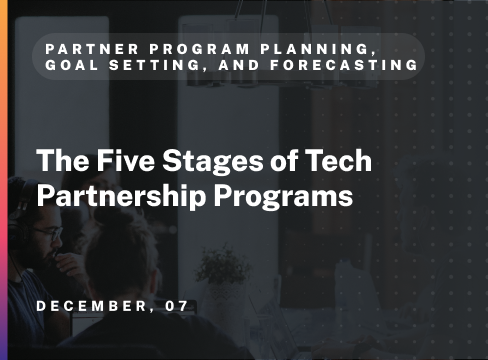Every partnership working towards technological innovation and growth goes through distinct stages. Understanding these phases is crucial for any company aiming to foster successful tech partnerships. Thanks to insights from our friends at Pandium, we can delve into these stages to better grasp how they shape the journey of tech collaboration.
These stages, ranging from Newbie to Elite, offer a roadmap for development and maturity in tech partnerships. This knowledge is invaluable for businesses striving to evolve from fledgling collaborations to industry leaders in technological alliances.
Overview
Tech partnerships evolve through five stages, each with unique features.
The journey begins with the Newbie stage, where basic API and team formation are vital focuses. The API’s complexity increases in the Beginner stage, and team growth becomes a priority. These early stages are crucial in setting a solid foundation for a partnership’s growth and success.

Next, we will delve into the specifics of each stage, highlighting their distinct challenges and opportunities.
1. Newbie Stage: The Starting Point
In the Newbie stage of a tech partnership, the focus is on essential development and initial team formation.
Here, companies are typically partnerships working with a rudimentary API, often just starting to explore the potential of their tech partnerships. It’s a stage characterized by learning and experimentation.
At this stage, the team size is usually small, allowing for close-knit collaboration but posing limitations regarding resources and skills. The partnership’s presence in app marketplaces is minimal or nonexistent, and user experience (UX) and configurations are in their most basic form.
The newbie stage is a time to:
- Test ideas
- Understand the market
- Plan for future growth
The journey ahead is long, but the foundations laid in the Newbie stage are critical for long-term success.
2. Beginner Stage: Building Foundations
Moving into the Beginner stage, tech partnerships start to build on their initial setup.
The API developed in the Newbie stage begins to evolve, offering more features and capabilities. This marks the first significant step towards a more integrated and functional tech partnership.
As partnerships working grow, so does the need for a larger, more diverse team with a broader skill set. This expansion is vital for managing the increasing complexity and pushing the boundaries of what can be achieved.
The partnership also starts to feel its presence in app marketplaces, indicating a move towards a more public and user-focused approach.
3. Intermediate Stage: Gaining Momentum
The API now offers improved integration and functionality in this stage, reflecting a deeper understanding of users’ needs and the market. Having grown in size and experience:
- The team works more efficiently and innovatively.
- Significant increase in partnership’s capabilities.
- Enhanced ability to contribute to business growth.
At this stage, the presence in app marketplaces becomes more pronounced, indicating a shift towards a larger user base and increased visibility. User experience (UX) and configurations receive more attention, leading to a more refined and user-friendly product.
4. Advanced Stage: Solidifying Presence
In the Advanced stage, tech partnerships thrive with a highly sophisticated API that offers robust and complex functionalities to cater to diverse user needs. With a larger, experienced team capable of handling complex challenges and driving innovation, possibilities are endless.
In this stage:
- The partnership’s prominent presence in app marketplaces showcasing various products and services.
- The focus on UX and configurations becomes more intense, emphasizing delivering a seamless user experience.
- Cementing the partnership’s reputation in the market and demonstrating its ability to deliver high-quality, user-centric solutions is critical.
The partnership is now well-positioned to take on bigger challenges and leverage opportunities for further growth and success.
5. Elite Stage: Leading the Market
This stage represents the pinnacle of tech partnerships’ development. It showcases advanced APIs with top-tier functionality and integration capabilities. The team at this stage not only consists of a larger size but also includes industry experts and thought leaders who drive forward-thinking innovation and set industry standards.
Marketplace presence at this level is dominant, with a wide array of sophisticated products and services that set the benchmark for competitors. The focus on UX and configurations reaches its zenith, ensuring an unparalleled user experience.
This stage represents the ultimate goal of partnerships working together: a market-leading position characterized by excellence, innovation, and a deep, impactful presence in the industry.
Conclusion
Understanding the five stages of tech partnership is crucial for guiding a partnership’s growth. Each stage represents a unique development phase with its challenges and opportunities. By recognizing and navigating these stages, companies effectively evolves their tech partnerships working to become industry-leading forces, ultimately achieving success in the dynamic and competitive world of technology.
Download your copy from Pandium here: https://www.pandium.com/resources/five-stages-of-tech-partnership-programs
Join The 1700+ Leaders Transforming Partnerships
As a member of Partnership Leaders you will:
- Build and learn with the top partner people at the best companies around the world.
- Increase your impact and accelerate your career with proven resources, tools, and best practices.
- Grow a network of peers, partners, and advisors with common objectives.



